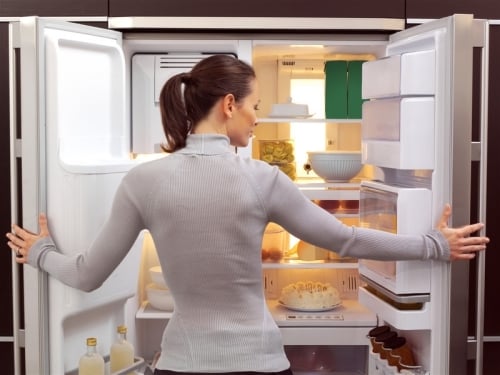Trending: New connected home appliances made a big splash at CES 2016. Are consumers ready for yours?
“Intelligence” updates to home appliances took center stage at the pre-launch of CES 2016, as connected home products were introduced to the industry media like superstars.
As described by one blogger’s account of the press day events, “Several major companies elevated home appliances to center stage… (when) typically, the large consumer electronics manufacturers that present new gadgets on the day before the official opening of CES focus on flashing their television innovations…”
And what about at retail?
The focus on retail of smart appliances was also dramatically sharper this year for connected home solution providers.
According to retail industry Practice Leader Mark Doornbosch, almost every retailer and original equipment manufacturer is trying to figure out how and when to bring their products to market faster for better sales. They’re looking to win greater market share for their connected home appliances – whether smart ovens that memorize dozens of recipes, or smart refrigerators with interior cameras and built-in touchscreens.
Though consumers will soon be able to check the inside of their fridge from their smartphone while standing in the grocery store aisle, or stand at their kitchen fridge and order groceries and music to cook by… those technologies are still new enough that retailers have a challenge before them in getting consumers to understand what’s available and how it fits into their lifestyle.
Connected home electronics: can you integrate sales?
In this interview with Dealerscope magazine at CES 2016, Doornbosch, a solutions engineer at MarketSource, Inc., describes a few of the newest items and trends coming for connected home products, and more details of the pains and problems all retailers and OEMs are feeling in this specialized vertical of internet connectivity.
What should connected home retailers focus on?
*Excerpted from a Dealerscope interview at CES 2016. Watch the whole interview here
Though there is big interest from consumers in the home solutions market, Doornbosch points out, there is still one hitch:
“It’s the lack of a shared common language that’s holding the industry back.
Retailers need to improve how they help the consumer. They need to be selling the services, like broadband, and security as part of a connected home solution. The consumer wants it, and they want it individualized. 4k content connectivity will be growing next year. Without higher broadband speeds, the greatly enhanced capabilities of these and other services will not be fully utilized. With google fiber- we’ll see speeds up to a Terabyte. And to connect all of these connected home appliances and other ‘smart’ products, greater broadband width is needed. The greater capacity will help the consumer to integrate everything.
OEMs are trying to figure out the IoT. There is big interest from the consumer.
That challenge with languages between products not being compatible should shake out- Solutions should become more smooth and less of an issue as one language becomes standard. By the end of 2016, they’ll have it figured out.
For instance, with the new button-sized computer (from Intel), anything to connect will be connected. And in 2016, data will be king. Whether it’s from wearables, a watch or fitness tracker… it will be amazing to witness.”
What are some of the factors limiting your speed to market in the smart home appliances industry?
What consumers want and when they want it
According to one electronics industry manufacturer’s report, consumers themselves may have delayed the advancement of appliance intelligence. “Connected appliances have been a long time coming. A decade ago the former Sun Microsystems led early efforts in smart white goods based on embedded versions of its Java software, but they failed to gain widespread support.”
Given new data like a recent Realtor industry report, the public now appears ready and willing to buy new appliances: “Sixty-two percent of households say an updated kitchen with modern appliances and fixtures is important; only 38 percent are satisfied with their current home’s kitchen.”
Where consumers need your help
Recent Gartner data shows however, that consumers are presently unclear about the phrase “smart home.” This presents a clear opportunity! The need for you to improve your buyer awareness and experience is imperative, as Gartner also forecasts a typical family home could contain 500+ smart devices by 2022.
According to the Gartner forecast, low awareness is the most distinguishable impediment for adoption. Obviously, consumers cannot buy products and services of which they are unaware. Interestingly, knowing how and where to purchase most connected products is even lower than knowledge of the products and services themselves.
Consumers do want connected home appliances. If you can show them how to integrate your smart appliances into their lives and homes, you can win the market share.
Finding the right retail solution can be faster and more effective with retail partners. MarketSource is in the position to design custom retail solutions for your new technology and smart appliances- Find out more about that in our newest IoT webinar, Selling the Internet of Things – Why are Retail Solutions a Challenge?

